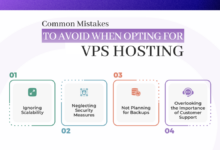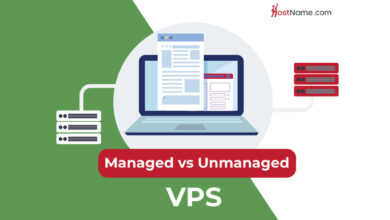Secure Your VPS: Best Practices for Safety and Reliability
How to Secure Your VPS: Best Practices for Safety and Reliability – this comprehensive guide unveils the critical steps to fortify your virtual private server against modern threats. From selecting a robust provider and hardening your operating system to implementing robust network security and establishing a comprehensive backup strategy, we’ll explore the essential techniques to ensure your VPS remains secure, reliable, and performs optimally. This journey will cover everything from choosing the right provider and securing your operating system to implementing advanced network security measures and establishing a robust data backup and disaster recovery plan. We’ll also delve into crucial aspects such as user account management, regular security audits, and protection against common attacks like DDoS and SQL injection. Prepare to strengthen your VPS defenses and safeguard your valuable data.
This guide offers a practical, step-by-step approach to securing your VPS, regardless of your technical expertise. We will provide clear explanations, actionable advice, and illustrative examples to help you implement these best practices effectively. By following these guidelines, you can significantly reduce your vulnerability to cyber threats and ensure the continued smooth operation of your VPS.
Choosing a Reliable VPS Provider
Selecting the right Virtual Private Server (VPS) provider is paramount for ensuring the security and reliability of your online presence. A poorly chosen provider can lead to performance issues, security vulnerabilities, and ultimately, significant financial losses. This section will guide you through the process of choosing a provider that prioritizes both security and dependability.
VPS Provider Comparison
The choice of VPS provider significantly impacts your system’s security and performance. Below is a comparison of three leading providers, focusing on key features relevant to security and reliability. Note that pricing can fluctuate and these are estimates based on typical configurations.
| Feature | Provider A (Example) | Provider B (Example) | Provider C (Example) |
|---|---|---|---|
| Starting Price (Monthly) | $5 | $7 | $10 |
| Security Features (e.g., DDoS protection, firewalls) | Basic DDoS protection, configurable firewall | Advanced DDoS mitigation, managed firewall, intrusion detection | Comprehensive DDoS protection, managed firewall, intrusion detection, regular security audits |
| Customer Support (Availability, response time) | 24/7 ticketing system, average response time 12 hours | 24/7 live chat and phone support, average response time 1 hour | 24/7 live chat, phone, and email support, average response time 30 minutes, dedicated account manager for enterprise plans |
| Data Center Location & Redundancy | Multiple data centers, basic redundancy | Multiple data centers across regions, high availability architecture | Multiple geographically diverse data centers, robust redundancy, automatic failover |
Critical Factors in VPS Provider Selection
Several key factors must be considered when choosing a VPS provider that prioritizes security and reliability. These factors directly impact the overall performance and security posture of your VPS.
Selecting a provider involves careful evaluation of their infrastructure, security practices, and support capabilities. For instance, the physical location of their data centers, the level of redundancy built into their network, and their approach to security updates are all crucial considerations. A provider with a strong track record of uptime and robust security measures is essential for maintaining a reliable and secure online presence. Furthermore, the quality of their customer support is vital for resolving any technical issues or security concerns that may arise. A provider with readily available and responsive support can significantly reduce downtime and mitigate security risks.
Service Level Agreements (SLAs) and Their Impact
Service Level Agreements (SLAs) are crucial contracts that define the expected performance and uptime guarantees provided by a VPS provider. These agreements typically specify the guaranteed uptime percentage (e.g., 99.9%), response times for support requests, and procedures for handling outages. A strong SLA ensures that the provider is accountable for meeting specific performance and availability targets, directly impacting the reliability of your VPS. Furthermore, the SLA’s clauses regarding security incidents, such as data breaches or DDoS attacks, are critical. These clauses outline the provider’s responsibilities and the compensation mechanisms in case of security failures. For example, a robust SLA might include provisions for crediting you for downtime or offering expedited support during a security incident. Without a clearly defined SLA, you lack recourse if the provider fails to meet its obligations regarding uptime or security. Therefore, carefully reviewing and understanding the terms of the SLA before committing to a provider is vital for mitigating potential risks.
Operating System Security Hardening
Securing your Virtual Private Server (VPS) operating system is paramount to the overall security of your applications and data. A hardened OS minimizes vulnerabilities, making it significantly more difficult for attackers to gain unauthorized access. This section details best practices for securing both Linux and Windows-based VPS environments.
Linux-based VPS Security Hardening
Securing a Linux VPS involves several key steps, focusing on user management, SSH access, and firewall configuration. Proper implementation of these measures significantly reduces the attack surface.
User Management: Avoid using the root user for daily tasks. Create a dedicated user account with sudo privileges for administrative functions. This limits the impact of a compromised account. Regularly review user accounts, removing any inactive or unnecessary ones. Password complexity should be enforced, and regular password changes should be encouraged (though consider using password managers to make this more manageable).
SSH Key Authentication: Disable password-based SSH logins. Instead, utilize SSH key authentication, a far more secure method. Generating and deploying SSH keys involves creating a public-private key pair. The public key is placed on the server, while the private key remains on your local machine. This ensures that only you (or those with access to your private key) can log in. This significantly reduces the risk of brute-force attacks targeting SSH passwords.
Firewall Configuration: Configure a firewall (like `iptables` or `firewalld`) to only allow necessary network traffic. Block all incoming connections except those required for your applications and remote management. Regularly review and update your firewall rules to reflect changes in your network configuration. For instance, only allow SSH connections from your trusted IP addresses, and ensure that other ports (like HTTP, HTTPS, etc.) are only open to specific IP addresses or networks if required.
Windows-based VPS Security Hardening
Hardening a Windows VPS necessitates a different approach, prioritizing updates, security patches, and robust user account controls.
Windows Updates and Security Patches: Enable automatic updates for the operating system and all installed software. This ensures that your VPS is protected against the latest known vulnerabilities. Regularly check for and install security patches promptly. Microsoft regularly releases security updates to address known exploits, and installing these updates is crucial for maintaining a secure environment.
User Account Controls (UAC): Maintain the UAC setting at a level that requires administrator privileges for most actions. This prevents malicious software from making system-wide changes without explicit user approval. Limit the number of administrator accounts and ensure strong passwords are used for all accounts. Avoid running applications with unnecessary administrative privileges. Running applications with elevated privileges can increase the impact of a successful compromise.
Windows Firewall: Configure the Windows Firewall to block all incoming connections except those required by your applications. Regularly review and update the firewall rules. Similar to Linux, only allow connections from trusted IP addresses and ensure that only necessary ports are open. This minimizes the potential attack surface and protects against unauthorized access.
Operating System Security Comparison
Linux and Windows offer different security models and present unique challenges. Linux, with its open-source nature and command-line interface, allows for granular control over system configurations. However, this requires a deeper understanding of system administration. Windows, while offering a more user-friendly interface, relies heavily on Microsoft’s security updates and patches. A failure to apply these updates promptly leaves the system vulnerable. Both systems, when properly configured and maintained, can provide a secure VPS environment; the choice often depends on administrative expertise and application requirements. For example, a company with extensive Linux expertise might prefer a Linux-based VPS, while a company more familiar with Windows might find a Windows-based VPS easier to manage.
Network Security Best Practices
Securing your VPS’s network is paramount to its overall security. A robust network security strategy involves multiple layers of protection, working together to prevent unauthorized access and data breaches. This section will focus on crucial network security best practices, including firewall configuration and the benefits of using VPNs for remote access.
A strong firewall acts as the first line of defense, meticulously inspecting all incoming and outgoing network traffic and blocking any communication that doesn’t meet predefined security rules. Without a properly configured firewall, your VPS is vulnerable to a wide range of attacks, including port scanning, denial-of-service attacks, and unauthorized access attempts. Effective firewall management significantly reduces your VPS’s attack surface and mitigates the risk of compromise.
Firewall Rules to Block Common Attack Vectors
Implementing a well-defined set of firewall rules is essential to effectively protect your VPS. These rules dictate which network traffic is permitted and which is blocked, based on factors such as source IP address, destination port, and protocol. Carefully crafted rules can significantly enhance your security posture.
- Block all inbound traffic except for necessary ports: Only allow inbound connections on ports absolutely required for your applications and services. For example, if you’re running a web server, only allow inbound traffic on port 80 (HTTP) and 443 (HTTPS). Block all other inbound ports.
- Restrict access based on IP addresses: If possible, restrict access to your VPS to only trusted IP addresses. This prevents unauthorized users from accessing your system from unknown locations.
- Block common attack ports: Block inbound connections on commonly exploited ports, such as ports 21 (FTP), 22 (SSH – unless you’re using SSH, then restrict access appropriately), 23 (Telnet), and 135-139 (various Windows services). Note that if you need to use these ports, restrict access to only specific IP addresses and utilize strong authentication methods.
- Implement rate limiting: Rate limiting restricts the number of connection attempts from a single IP address within a specific timeframe. This helps mitigate denial-of-service (DoS) attacks by preventing attackers from overwhelming your server with excessive requests.
- Use stateful inspection: Stateful inspection firewalls track the state of network connections, allowing only legitimate return traffic. This helps prevent many types of attacks that try to bypass security measures by forging return packets.
VPNs for Secure Remote Access
Using a Virtual Private Network (VPN) to access your VPS remotely provides an additional layer of security, encrypting all data transmitted between your computer and the VPS. This encryption prevents eavesdropping and ensures that your connection remains private, even when using public Wi-Fi networks. Implementing a VPN adds significant protection against man-in-the-middle attacks and other network-based threats. A properly configured VPN can encrypt all traffic and hide your IP address, adding an extra layer of security and anonymity.
Server Software Security
Securing your server software is paramount to the overall security of your VPS. Vulnerabilities in applications like web servers and databases can expose your system to attacks, data breaches, and service disruptions. This section details common vulnerabilities and mitigation strategies for popular server software, focusing on proactive security measures to minimize risk.
Apache and Nginx Web Server Vulnerabilities and Mitigation
Apache and Nginx, two of the most widely used web servers, are frequently targeted by attackers. Known vulnerabilities often involve misconfigurations, outdated software, and exploitable modules. Mitigation involves careful configuration, regular updates, and the implementation of security best practices. For instance, neglecting to regularly update these servers can leave them vulnerable to known exploits, potentially allowing unauthorized access and control. Similarly, improper configuration, such as enabling unnecessary modules or failing to restrict access to specific directories, can significantly increase the attack surface.
Recommended Security Configurations for Apache and Nginx
The following table outlines recommended security configurations for Apache and Nginx web servers. These settings are not exhaustive, and specific requirements may vary depending on your application and environment. Always consult the official documentation for the most up-to-date and comprehensive security guidance.
| Setting | Apache Recommendation | Nginx Recommendation | Rationale |
|---|---|---|---|
| Enable HTTPS | Enable and configure SSL/TLS using a trusted certificate. | Enable and configure SSL/TLS using a trusted certificate. | Encrypts communication between the web server and clients, protecting sensitive data. |
| Disable Unnecessary Modules | Disable modules not required by your applications. | Disable unnecessary modules. | Reduces the attack surface by removing potential vulnerabilities. |
| Restrict Directory Access | Configure appropriate access controls to restrict access to sensitive directories. | Configure access controls using location blocks to restrict access. | Prevents unauthorized access to sensitive files and directories. |
| Regular Security Audits | Conduct regular security audits and penetration testing. | Conduct regular security audits and penetration testing. | Identifies and addresses potential vulnerabilities before they can be exploited. |
| Firewall Configuration | Configure a firewall to allow only necessary traffic. | Configure a firewall to allow only necessary traffic. | Protects the server from unauthorized access attempts. |
| Log File Monitoring | Monitor log files for suspicious activity. | Monitor log files for suspicious activity. | Detects potential attacks and security breaches. |
MySQL and PostgreSQL Database Security
Similar to web servers, databases require robust security measures. Weak passwords, insufficient access controls, and outdated software versions are common vulnerabilities. Mitigation strategies include strong password policies, regular backups, and the principle of least privilege, granting users only the necessary permissions. For example, a database compromised due to weak passwords could lead to data exfiltration or modification, potentially causing significant financial and reputational damage. Failing to regularly back up the database increases the risk of data loss in case of an attack or system failure.
Regular Updates and Patching
Regularly updating server software and plugins is crucial for maintaining security. Software vendors release updates to address known vulnerabilities, and failing to apply these updates leaves your system exposed to potential attacks. For example, the Heartbleed vulnerability in OpenSSL, discovered in 2014, highlighted the critical importance of prompt patching. Many systems were compromised because they were running outdated versions of OpenSSL that were vulnerable to this exploit. A scheduled update process, coupled with robust testing, ensures that your server remains protected against the latest threats.
Data Backup and Disaster Recovery
Data backup and disaster recovery are critical components of a robust VPS security strategy. A well-defined plan ensures business continuity and minimizes data loss in the event of hardware failure, cyberattacks, or other unforeseen circumstances. Regular backups and a tested recovery plan are essential for maintaining the reliability and integrity of your VPS.
A comprehensive backup strategy involves several key elements, including the frequency of backups, the location of backup storage, and detailed procedures for restoring data. It is crucial to choose a backup solution that meets your specific needs and risk tolerance. Consider factors such as the amount of data you need to protect, the recovery time objective (RTO), and the recovery point objective (RPO).
Backup Types and Their Characteristics
Different backup types offer varying levels of efficiency and data protection. Understanding the advantages and disadvantages of each method is essential for designing an optimal backup strategy. Choosing the right approach depends on factors like storage space, backup time, and recovery requirements.
- Full Backup: A full backup copies all data from the source to the backup storage. Advantages include ease of restoration and a complete data snapshot. Disadvantages include longer backup times and higher storage consumption compared to other methods.
- Incremental Backup: An incremental backup only copies data that has changed since the last full or incremental backup. Advantages include shorter backup times and lower storage consumption. Disadvantages include longer restoration times as multiple backups may need to be restored sequentially. A full backup is usually required periodically to establish a new base.
- Differential Backup: A differential backup copies all data that has changed since the last full backup. Advantages include faster restoration than incremental backups because only the full backup and the last differential backup are needed. Disadvantages include larger backup sizes than incremental backups after multiple backups.
Disaster Recovery Strategies
Disaster recovery planning ensures business continuity in the event of a catastrophic event. This plan should detail procedures for restoring data and services, including the use of failover mechanisms and redundant systems. Testing the plan regularly is crucial to ensure its effectiveness.
A common strategy involves using a secondary VPS as a failover system. If the primary VPS fails, the secondary VPS can take over, minimizing downtime. This secondary VPS can be configured to automatically take over in the event of a primary server failure through technologies such as cloud load balancing or clustering. Replication of critical data to a geographically separate location adds another layer of protection against regional disasters. Regular drills and simulations help ensure a smooth transition to the failover system in a real-world scenario. For example, a company could simulate a server crash by shutting down its primary VPS and verifying that the secondary VPS successfully takes over within the acceptable RTO. This ensures that the recovery plan is not only documented but also fully functional.
User Account Security
Robust user account security is paramount for a secure VPS. Neglecting this aspect can leave your server vulnerable to unauthorized access and compromise the confidentiality, integrity, and availability of your data and applications. Proper user account management involves implementing strong password policies, carefully controlling permissions, and avoiding the risks associated with shared accounts.
Strong passwords and effective password management are fundamental to preventing unauthorized access. Weak passwords, easily guessed or cracked, represent a significant security risk.
Strong Passwords and Password Management
Implementing strong passwords involves creating complex combinations of uppercase and lowercase letters, numbers, and symbols. These passwords should be unique to each account and regularly changed. Password managers, software applications designed to securely store and manage passwords, can significantly improve password security by generating strong, unique passwords for each account and eliminating the need to remember them all. Using a reputable password manager with strong encryption is a crucial step in enhancing overall security. For example, a password like “P@$$wOrd123!” is significantly stronger than “password123”. The length and complexity of the password directly impact its resistance to brute-force attacks.
User Account Management and Permissions
Managing user accounts and permissions involves creating individual accounts for each user with the principle of least privilege. This means granting each user only the necessary permissions to perform their tasks, limiting potential damage from compromised accounts. Avoid using a single root account for all tasks; instead, create separate accounts for specific functions. Regularly review and update user permissions to ensure they remain appropriate. For example, a database administrator might only need access to the database server and related tools, not the entire VPS. Conversely, a web server administrator would require access to the web server files and configuration but not necessarily to the database.
Risks of Shared Accounts and Benefits of Individual Accounts
Shared accounts pose a significant security risk. If one user’s account is compromised, the attacker gains access to all resources associated with that shared account. This creates a single point of failure, increasing the potential impact of a successful attack. Individual accounts, on the other hand, limit the damage from a compromise. Even if one account is compromised, the attacker’s access is restricted to the resources associated with that specific account, mitigating the overall risk. Furthermore, individual accounts allow for better auditing and accountability, making it easier to track user activity and identify potential security breaches. The use of individual accounts also simplifies the management of user permissions and access controls.
Regular Security Audits and Monitoring
Proactive security measures are crucial for maintaining a reliable and secure VPS. Regular security audits and robust monitoring systems are essential components of a comprehensive security strategy, allowing for the early detection and mitigation of potential threats. This process involves a combination of automated scans, manual reviews, and real-time monitoring to identify and address vulnerabilities before they can be exploited.
Regular security audits systematically examine your VPS for weaknesses and misconfigurations. This involves both automated vulnerability scanning using tools that check for known exploits and outdated software, and manual reviews of system configurations, access controls, and security logs. The frequency of these audits should be determined based on your risk tolerance and the sensitivity of the data stored on your VPS; a higher-risk environment necessitates more frequent audits.
Vulnerability Scanning and Penetration Testing
Automated vulnerability scanners analyze your system for known security flaws. These tools can identify outdated software, weak passwords, and misconfigured services. Penetration testing simulates real-world attacks to identify vulnerabilities that automated scanners might miss. This process involves ethical hackers attempting to breach your system’s defenses, providing a realistic assessment of its security posture. Regular penetration testing, performed by qualified security professionals, is invaluable in identifying and remediating critical vulnerabilities. The results of these tests should be thoroughly reviewed and prioritized for remediation, with critical vulnerabilities addressed immediately.
Intrusion Detection and Prevention Systems (IDS/IPS)
Implementing an Intrusion Detection and Prevention System (IDS/IPS) is a critical step in proactive security. An IDS monitors network traffic and system activity for suspicious patterns, alerting administrators to potential intrusions. An IPS takes this a step further, actively blocking or mitigating malicious activity. These systems can be implemented either as software solutions installed on your VPS or as cloud-based services integrated with your network. Effective IDS/IPS configurations require careful tuning to minimize false positives while maximizing the detection of actual threats. Regularly reviewing IDS/IPS logs and adjusting rules based on observed activity is essential for optimal performance. For example, an IDS might detect a surge in unauthorized login attempts from a specific IP address, prompting an investigation and potential blocking of that IP.
Security Information and Event Management (SIEM)
Security Information and Event Management (SIEM) tools centralize and analyze security logs from various sources, including your VPS, network devices, and other security systems. This provides a comprehensive view of your security posture, enabling faster detection and response to security incidents. SIEM systems often incorporate machine learning algorithms to identify anomalies and potential threats that might be missed by traditional methods. Real-time monitoring of these logs allows for immediate responses to suspicious activity, minimizing the impact of potential breaches. A SIEM system can correlate events from different sources, for example, linking a failed login attempt to a subsequent data exfiltration attempt. This correlation capability is vital for identifying sophisticated attacks.
Protecting Against Common Attacks
Protecting your VPS from common attacks is crucial for maintaining its security and reliability. Understanding the mechanisms behind these attacks and implementing appropriate mitigation strategies is paramount to preventing data breaches, service disruptions, and financial losses. This section will cover some of the most prevalent attacks and detail effective countermeasures.
DDoS Attacks
Distributed Denial-of-Service (DDoS) attacks flood a server with overwhelming traffic from multiple sources, rendering it unavailable to legitimate users. These attacks can range from relatively small-scale disruptions to crippling events that take down entire websites or services. The sheer volume of traffic overwhelms the server’s resources, preventing it from responding to legitimate requests. This can lead to significant financial losses and reputational damage.
Mitigation Techniques for DDoS Attacks
Implementing robust mitigation strategies is essential to protect against DDoS attacks. These strategies often involve a multi-layered approach combining various techniques.
| Attack Type | Mitigation Technique | Description | Example/Implementation |
|---|---|---|---|
| DDoS | Using a Content Delivery Network (CDN) | CDNs distribute traffic across multiple servers, reducing the impact of a DDoS attack on any single server. | Cloudflare, Akamai, Amazon CloudFront are popular CDN providers that offer DDoS protection. These services act as a reverse proxy, absorbing much of the malicious traffic before it reaches your VPS. |
| DDoS | Employing a Web Application Firewall (WAF) | WAFs filter malicious traffic based on predefined rules and patterns, blocking many DDoS attack vectors before they reach your server. | Many cloud providers (AWS, Azure, Google Cloud) and third-party providers offer WAF services that can be integrated with your VPS. These WAFs can identify and block common DDoS attack signatures. |
| DDoS | Rate Limiting | This technique restricts the number of requests from a single IP address or network within a given time frame. | Most web servers (Apache, Nginx) offer built-in rate-limiting capabilities that can be configured to block excessive requests from suspected attackers. |
Brute-Force Attacks
Brute-force attacks involve systematically trying various combinations of usernames and passwords to gain unauthorized access to a system. These attacks can be automated using scripts and bots, making them a persistent threat. Successful brute-force attacks can compromise sensitive data and grant attackers full control over the VPS.
Mitigation Techniques for Brute-Force Attacks
Preventing brute-force attacks requires a layered approach that combines technical and procedural safeguards.
| Attack Type | Mitigation Technique | Description | Example/Implementation |
|---|---|---|---|
| Brute-Force | Strong Password Policies | Enforce strong, unique passwords with a minimum length, complexity requirements, and regular changes. | Implement password complexity rules requiring uppercase and lowercase letters, numbers, and symbols. Consider using a password manager to generate and store strong passwords securely. |
| Brute-Force | Account Lockout Mechanisms | Temporarily block accounts after a certain number of failed login attempts. | Most operating systems and web servers have built-in account lockout features that can be configured to automatically block accounts after a specified number of failed login attempts. |
| Brute-Force | Two-Factor Authentication (2FA) | Require a second form of authentication, such as a code from a mobile app, in addition to a password. | Many services offer 2FA integration, adding an extra layer of security to prevent unauthorized access even if the password is compromised. |
SQL Injection Attacks
SQL injection attacks exploit vulnerabilities in web applications to inject malicious SQL code into database queries. This allows attackers to manipulate or access sensitive data, potentially compromising the entire database. These attacks often target poorly sanitized user inputs, allowing attackers to bypass security measures.
Mitigation Techniques for SQL Injection Attacks
Preventing SQL injection requires careful coding practices and the use of appropriate security measures.
| Attack Type | Mitigation Technique | Description | Example/Implementation |
|---|---|---|---|
| SQL Injection | Parameterized Queries/Prepared Statements | Use parameterized queries or prepared statements to separate data from SQL code, preventing malicious code injection. | Instead of directly embedding user input into SQL queries, use placeholders that are handled separately by the database system. Most database systems (MySQL, PostgreSQL) support parameterized queries. |
| SQL Injection | Input Validation and Sanitization | Validate and sanitize all user inputs to prevent malicious code from being executed. | Check user inputs for unexpected characters or patterns, and escape or remove potentially harmful characters before using them in database queries. |
| SQL Injection | Least Privilege Principle | Grant database users only the necessary permissions to perform their tasks, limiting the impact of a successful attack. | Avoid granting excessive permissions to database users. Only grant the minimum necessary privileges required for each user or application. |
Implementing SSL/TLS Certificates
Securing your VPS involves protecting all communication channels, and a crucial step is implementing SSL/TLS certificates to encrypt web traffic. This ensures that data exchanged between your server and clients remains confidential and integrity is maintained. This section details the process of obtaining, installing, and managing SSL/TLS certificates for optimal security.
SSL/TLS certificates are digital certificates that authenticate the ownership of a website and enable encrypted communication using HTTPS. This encryption prevents eavesdropping and tampering with data during transmission. The process involves obtaining a certificate from a Certificate Authority (CA), installing it on your server, and configuring your web server to use it. The choice of encryption protocols and cipher suites is also critical for maintaining strong security.
Obtaining and Installing an SSL/TLS Certificate
The process of obtaining an SSL/TLS certificate generally involves choosing a Certificate Authority (CA), generating a Certificate Signing Request (CSR), submitting the CSR to the CA, receiving the certificate, and then installing it on your web server. Let’s assume we are using Let’s Encrypt, a free, automated, and open certificate authority. First, you would install the Certbot client on your server. Then, you would run the Certbot command appropriate for your web server (e.g., Apache or Nginx). Certbot will automatically handle the verification process and install the certificate and necessary intermediate certificates in the correct locations. For example, a typical command might be `certbot certonly –webroot -w /var/www/html -d example.com`. This command instructs Certbot to obtain a certificate for `example.com`, using the webroot plugin and placing the files in `/var/www/html`. After successful completion, the certificate files will be available in the specified directory. You then need to configure your web server (Apache or Nginx) to use these certificates. This usually involves updating your server’s configuration files to point to the newly obtained certificate and key files.
Using Strong Encryption Protocols and Cipher Suites
Strong encryption is paramount for effective SSL/TLS security. This involves choosing appropriate protocols and cipher suites that offer high levels of encryption strength and are resistant to known vulnerabilities. Modern web servers should support TLS 1.3 as the preferred protocol, which offers improved performance and security compared to older versions like TLS 1.2 or TLS 1.1. Furthermore, it is crucial to select cipher suites that use strong algorithms like AES-256-GCM or ChaCha20-Poly1305 for encryption. Avoid using weak or outdated cipher suites like those employing DES or 3DES, as they are easily compromised. Web server configurations often allow specifying preferred cipher suites, allowing for fine-grained control over the encryption algorithms used. Regularly updating your server software and libraries is also critical to ensure support for the latest and strongest cipher suites. For example, a server administrator might configure their web server to prioritize modern cipher suites within its configuration files, rejecting connections that attempt to use weak or obsolete encryption methods.
Managing SSL/TLS Certificates and Ensuring Validity
SSL/TLS certificates have a limited validity period, typically ranging from a few months to two years. It’s crucial to monitor certificate expiration dates and renew them before they expire to avoid service disruptions. Most modern certificate management tools offer automatic renewal functionality. Let’s Encrypt, for instance, provides this functionality through its Certbot client. Regular monitoring and timely renewal prevent security vulnerabilities and ensure continuous secure communication. Additionally, maintaining a secure and well-organized system for storing and managing certificate files is essential. Using a dedicated configuration management tool can help automate certificate management tasks, making it easier to handle multiple certificates across various servers. Furthermore, it’s important to implement a process for handling certificate revocation, in case a certificate is compromised or needs to be replaced. This might involve using Online Certificate Status Protocol (OCSP) stapling or Certificate Transparency logs to verify certificate validity in real-time.
Conclusive Thoughts
Securing your VPS is an ongoing process, requiring vigilance and proactive measures. By implementing the best practices outlined in this guide – from careful provider selection and OS hardening to robust network security and regular security audits – you can significantly enhance the safety and reliability of your VPS. Remember, a multi-layered approach is key to mitigating risks and ensuring the long-term protection of your valuable data and applications. Regularly reviewing and updating your security measures is essential in the ever-evolving landscape of cyber threats. Invest the time and effort to protect your digital assets, and enjoy the peace of mind that comes with a secure and reliable VPS.









